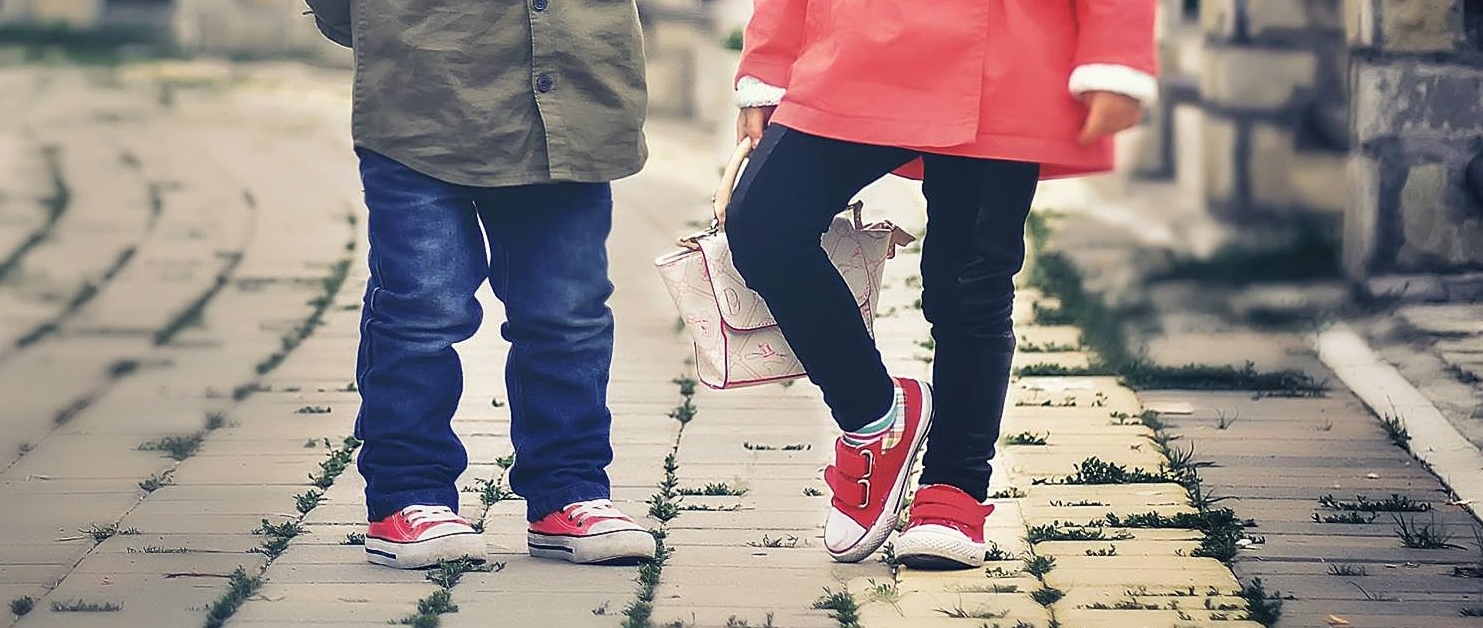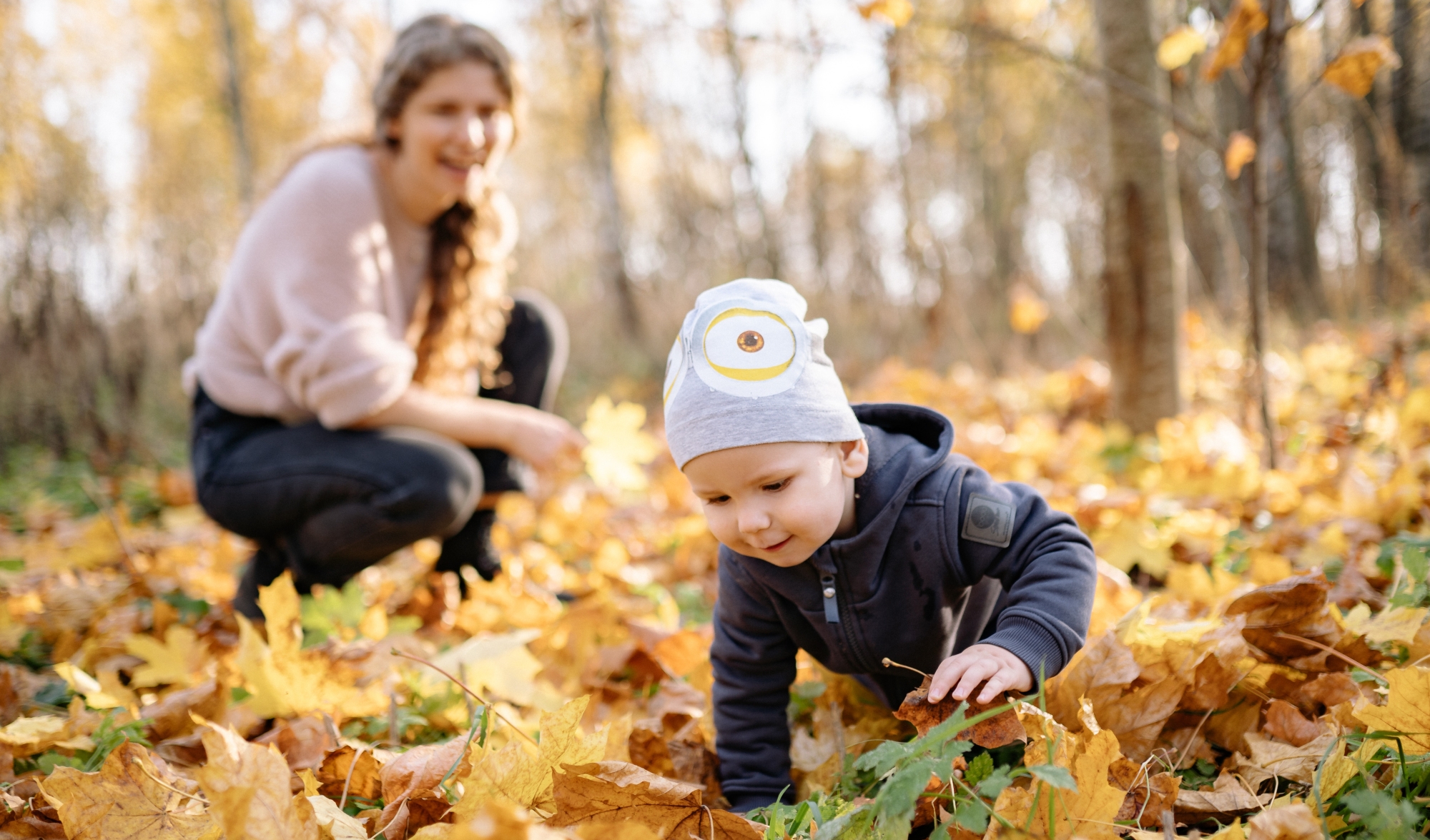Don’t worry, „valgus“ is not a swear word because it means „inwardly deviated from the normal position“. So, in plain English, it means „ankle caved in“, where your feet are in an X shape (knock knees). We will explain its cause and prevention in cooperation with physiotherapist Romana Cihlářová:
Crooked legs
Up to 6 months, babies have feet as grasping organs, similar to hands. They lose this function as they start to stand. It is good to continually simulate it by walking barefoot on different surfaces, such as balance stepping stones, narrow beams, sensory mats, etc.
Proper foot development, which we discussed in more detail in the previous article, is related to the quality of overall psychomotor development. We must not skip any stages, so stick to climbing as long as possible, encouraging the baby to do it. Let’s make sure the movements are symmetrical because it is necessary to strengthen both sides equally.
After standing up, physiologically, children first have legs in an O shape (bow legs) and a flat foot with a fat pad. With a gradual upright gait, the legs go more into an X, and the ankle turns inward. It always depends on the degree because up to 15°, it is natural. Around 5-6 years of age, such a deviation flattens out.

Therefore, we do not address the valgus ankle in beginner walkers and let them practice walking completely barefoot. Later on, we choose soft soles and other softest shoes that protect the foot but do not restrict its movement. It’s not the shoe that controls the child, but the child controls the shoe.
Hypermobile children with looser ligaments (so-called ligament laxity) are an exception. In these patients, sunken ankles do not straighten but collapse. You need to consult these individual cases with specialists. However, it is sufficient to deal with them only when the child stops actively crawling and starts to walk predominantly.
At a higher degree of valgusity and legs in an X shape, it is a hyper pronation syndrome, when the whole lower limb collapses. It relates not only to the legs but also to the pelvic area and the trunk condition. It is necessary to strengthen the abdomen and the overall centre of the body.
A similar signal for overall body strengthening can be when a child has an arch while sitting, but it collapses when loaded. It is a good sign when the children have an arch in a particular position, but they still need to work on their mid-body, move as much as possible. Let’s encourage them to move and climb actively in the water or outdoors.

Bone reinforcement
We do not interfere with the babies' first steps (not by pulling their hands or using a baby walker). Wait at least half a year to see what kind of movement they naturally develop. If it turns out to be incorrect, we can start to correct it. On the other hand, we must not wait too long because the child can develop an unnecessary habit. We should set up movement patterns early so the ankle can still align at preschool age.
At the age of 6, parallelly with the teeth replacement, bones ossify (harden). If the child still has a valgus ankle at that time, the ligament at the calcaneus hardens, and the tibia permanently attaches to it at the wrong angle. The ossified bone can no longer be changed, making the child more prone to injuries, ankle sprains, etc.
Therefore, firmer heels or insoles are recommended for valgus ankles to help keep the feet at the correct angle. However, it is also suitable to put these in wide shoes with soft soles and zero drop to avoid further deformation of the foot. While passive correction with an insole addresses the need to keep the ankle from moving further in the wrong direction, it doesn't take into consideration the condition of the rest of the body. It should be strengthened parallelly, especially in the abdomen and higher areas.
Overall, we recommend strengthening the bare feet naturally through active engagement and not relying solely on „crutches“ in the form of moulded consoles. For shoes, we should avoid narrow toe boxes, heels, and support for the longitudinal traverse arch (without a prior diagnosis). On the contrary, particularly children but also adult women and men will benefit in many ways from wearing barefoot shoes.
